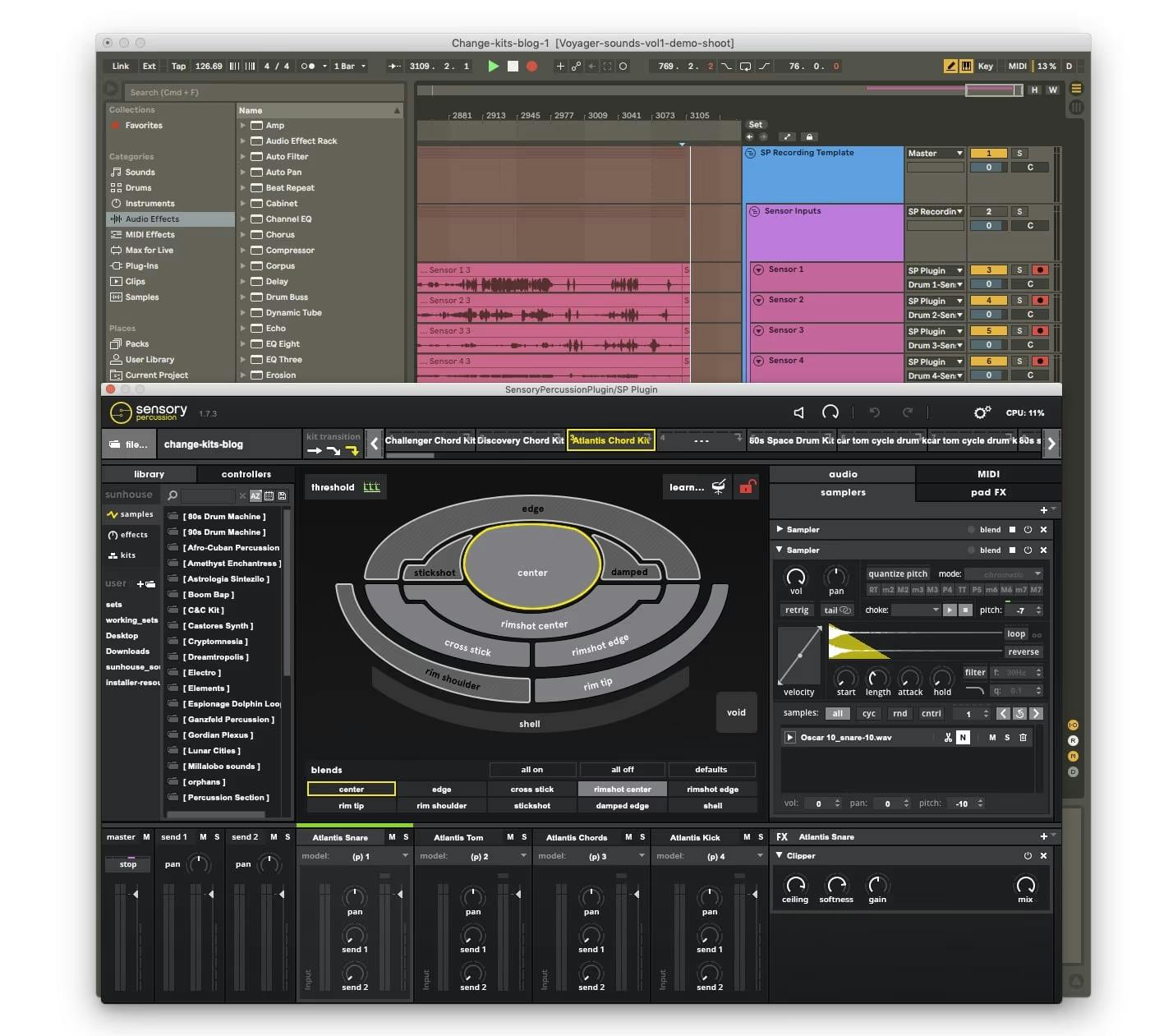Sensory Percussion 1.7 is out! And one of the core features of the update is that Sensory Percussion can now be opened as an Ableton Live 10 or Live 9 plugin. This is a game changer for drummer-producers who want to integrate Sensory Percussion into their Ableton workflow, and for people who want to utilize Ableton's looping and effects features alongside Sensory Percussion.
But one of the most compelling ways to use the Sensory Percussion Ableton plugin is to record the sensor audio of your performance and route it back into the plugin so that you can completely change all of the sounds after the fact. This works kind of like recording a MIDI loop in Ableton and then changing the sounds, but with Sensory Percussion, we're dealing with gobs more data and richness.
Check out the manual for the full nitty-gritty detail on how to get the plugin running.
How to change kits after a take
Once you have installed and set up the plugin, you can start playing and recording immediately. You can record both the sensor audio and the output of the Sensory Percussion plugin, but for changing all of the sounds after you record a take, you will definitely need to be recording the sensor audio.
You normally don't hear or deal with the audio from the sensor, but this is the signal that the Sensory Percussion algorithms analyze and work their magic on.

Once you have recorded yourself playing, you can simply switch kits in the Sensory Percussion Ableton Plugin, and then hit the play button in Ableton to hear what your performance sounds like on the new kit.
You can even edit the kits (or make entirely new kits) while the recorded performance is looping!
When you find or make a kit that you like, you can just re-record the output of the Sensory Percussion plugin (making sure that the sensor channels are all disarmed so that you don't record over them!).
::: warning note: make sure you don't change your drum model when you replay the output from the plugin, otherwise you might get unpredictable results! :::
Other uses for the Sensory Percussion Ableton Plugin
Tweaking sounds or changing kits after a take is one of the most compelling reasons to use the Sensory Percussion Ableton plugin, but other reasons you might want to use Sensory Percussion as an Ableton plugin are:
- Reduced latency over the SP Audio Streamer plugin
- Use Ableton looping and effects features with the sounds of Sensory Percussion
- Run Ableton and Sensory Percussion side-by-side without requiring multi-client ASIO drivers
- Simpler MIDI routing for using both sounds from SP and Ableton's drum rack
